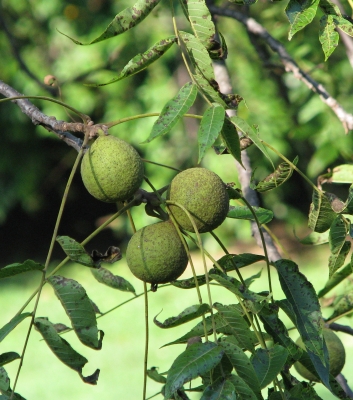A DIFFICULT NUT TO GET TO, BUT WORTH IT (IMHO)
Free Eats, and Delicious
After last year’s bumper crop of black walnuts, filberts, and acorns, I didn’t expect much this year, nutwise. As I looked up into the few black walnut trees bordering the farmden, my low expectations seemed justified. In desperation of securing my annual supply of black walnuts, I gave a shoutout to the local community for black walnuts. I got good feedback — of trees, trees that, as the nut season approached, proved to be barren.
Then, a couple of weeks ago, I noticed a few black walnuts on the ground beneath a couple of my favorite trees right here. A few days later, the ground was littered with nuts, perhaps not as much as in previous years, but still plenty. So it was time to get to work (details a few paragraphs ahead).

Too many people have never tasted a black walnut. That’s too bad. The nuts are distinctively delicious (if you like them). I much prefer them to English walnuts, the nut usually referred to when anyone says“walnut.” Black walnut trees grow and bear relatively quickly, casting a pleasant dappled shade beneath their limbs. Just don’t plant one or allow one to grow where tennis ball size fruits littering the ground each fall would be objectionable.
Black walnut trees are abundant over much of central and eastern North America. The nuts are free for the picking, and usually yield more than enough to satisfy humans and squirrels alike. Many a homeowner who’d like to get rid of the nuts strewn over their front lawn will let you come and pick them up. A homeowner once even gathered them up for me!

